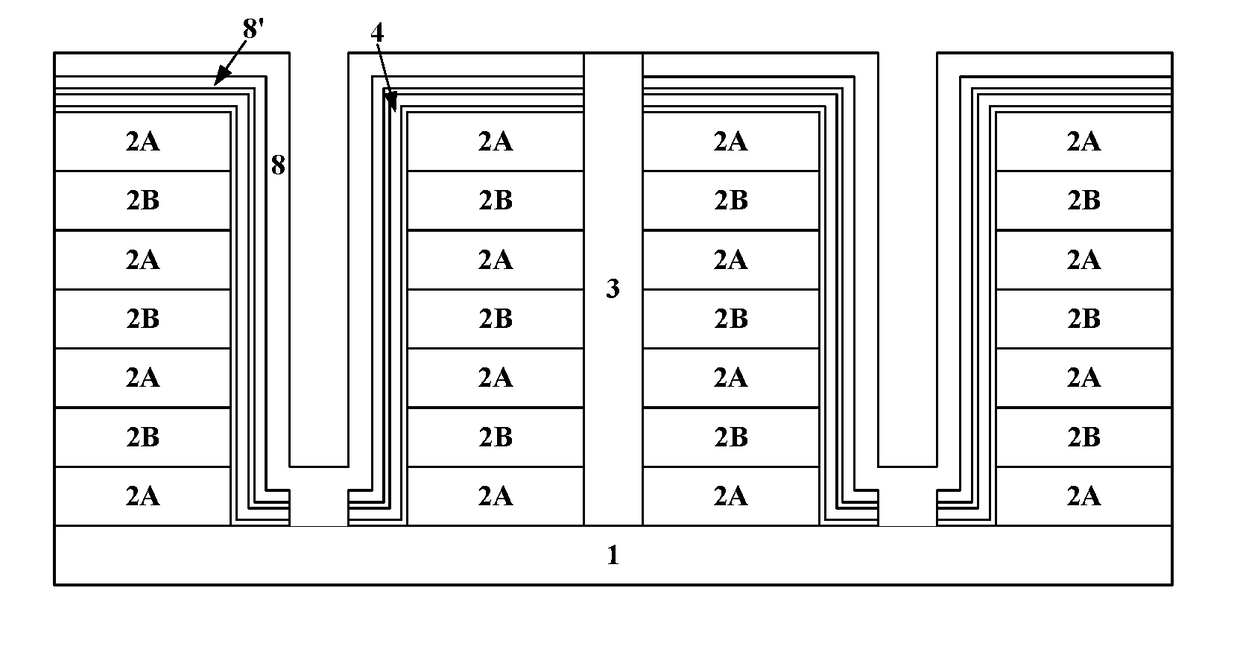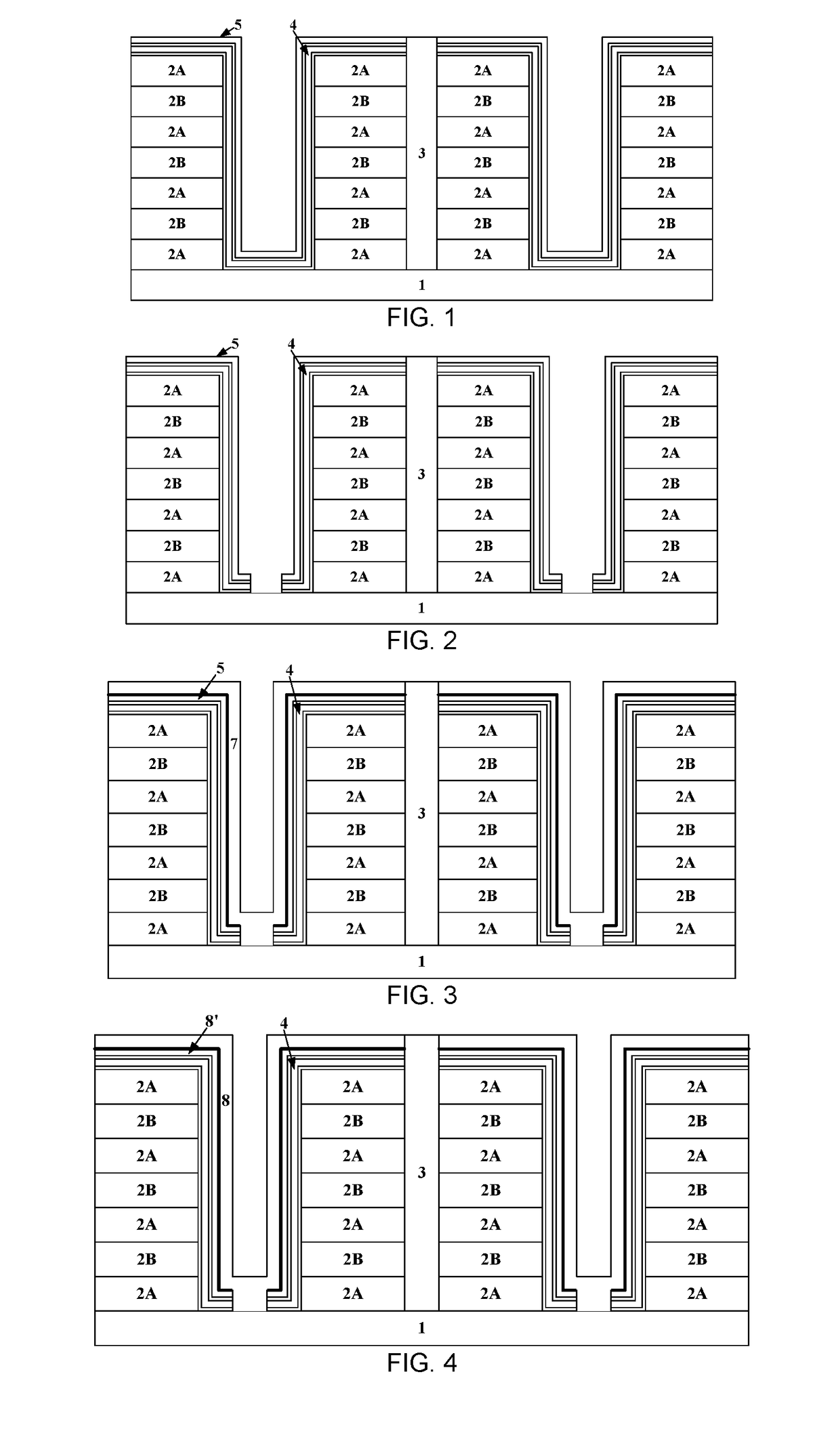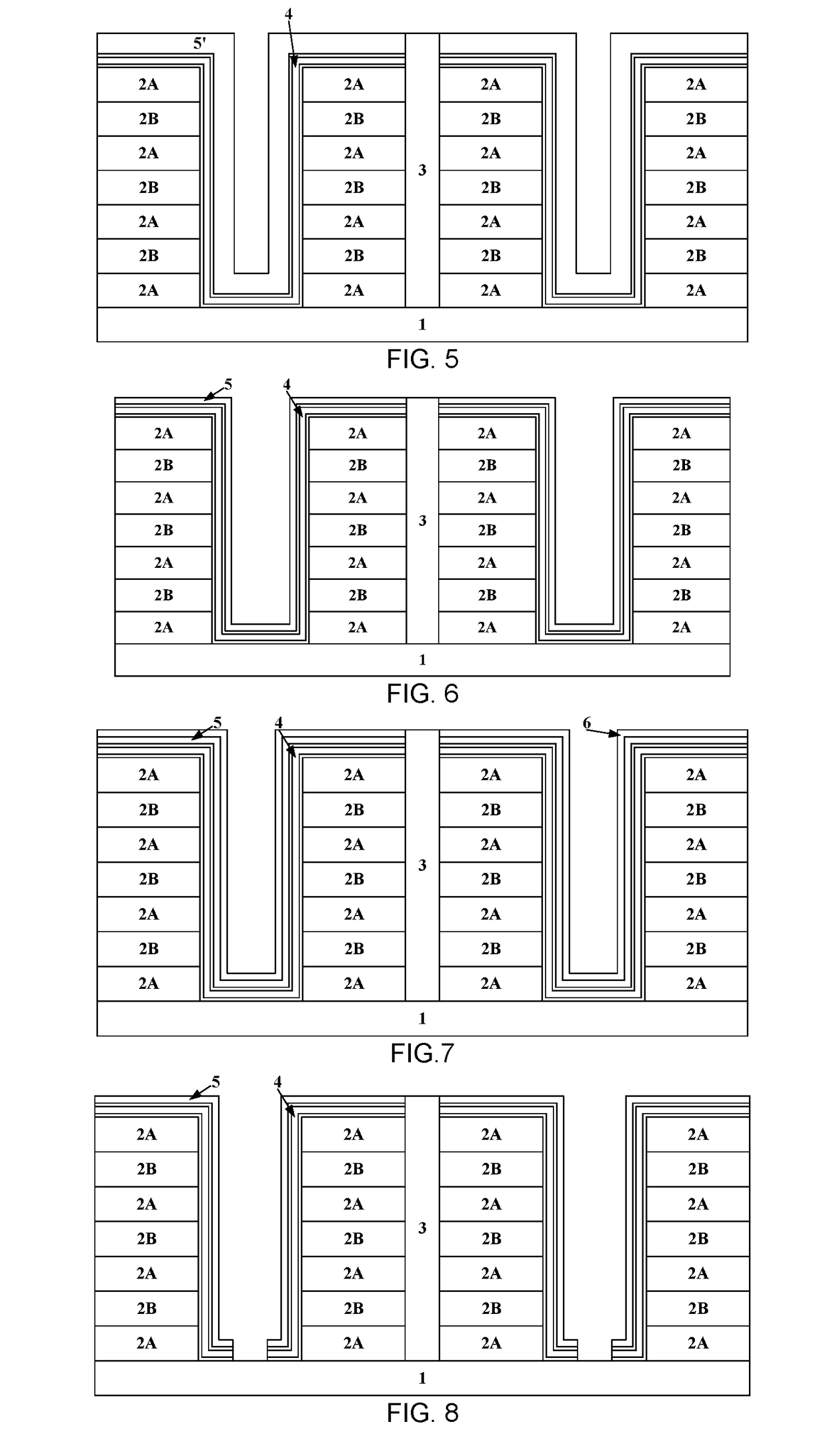Method of Manufacturing a Semiconductor Device
a manufacturing method and technology of semiconductor devices, applied in the direction of semiconductor devices, basic electric elements, electrical appliances, etc., can solve the problems of poor film quality and difficulty in multi-level cell operation, and achieve the effect of increasing the grain size of polycrystalline thin films, reducing interfacial state effectively, and enhancing device reliability
- Summary
- Abstract
- Description
- Claims
- Application Information
AI Technical Summary
Benefits of technology
Problems solved by technology
Method used
Image
Examples
Embodiment Construction
[0022]The features and technical effects of the present invention will be described in detail with reference to the drawings and schematic embodiments, disclosing a semiconductor device manufacturing method for effectively improving the reliability of the device. It should be noted that the similar reference numbers denote the similar structure. The terms used in the present invention like “first”, “second”, “up / upon”, “down / low / beneath / under” etc. can be used in denoting various device structures, and do not indicate the relationship in space, sequence or hierarchy of the device structures unless specially illuminated these terms, if not stated otherwise.
[0023]As shown in FIG. 12 and FIG. 5, a gate dielectric layer 4 and a first amorphous channel layer 5′ are formed in a plurality of channel trenches on a substrate 1.
[0024]A stacked structure 2 alternately composed of a plurality of first material layers 2A and a plurality of second material layers 2B is formed on the substrate 1. ...
PUM
| Property | Measurement | Unit |
|---|---|---|
| thickness | aaaaa | aaaaa |
| temperature | aaaaa | aaaaa |
| thickness | aaaaa | aaaaa |
Abstract
Description
Claims
Application Information
 Login to View More
Login to View More - R&D
- Intellectual Property
- Life Sciences
- Materials
- Tech Scout
- Unparalleled Data Quality
- Higher Quality Content
- 60% Fewer Hallucinations
Browse by: Latest US Patents, China's latest patents, Technical Efficacy Thesaurus, Application Domain, Technology Topic, Popular Technical Reports.
© 2025 PatSnap. All rights reserved.Legal|Privacy policy|Modern Slavery Act Transparency Statement|Sitemap|About US| Contact US: help@patsnap.com



